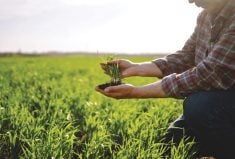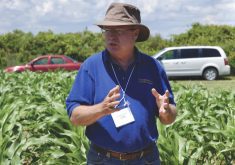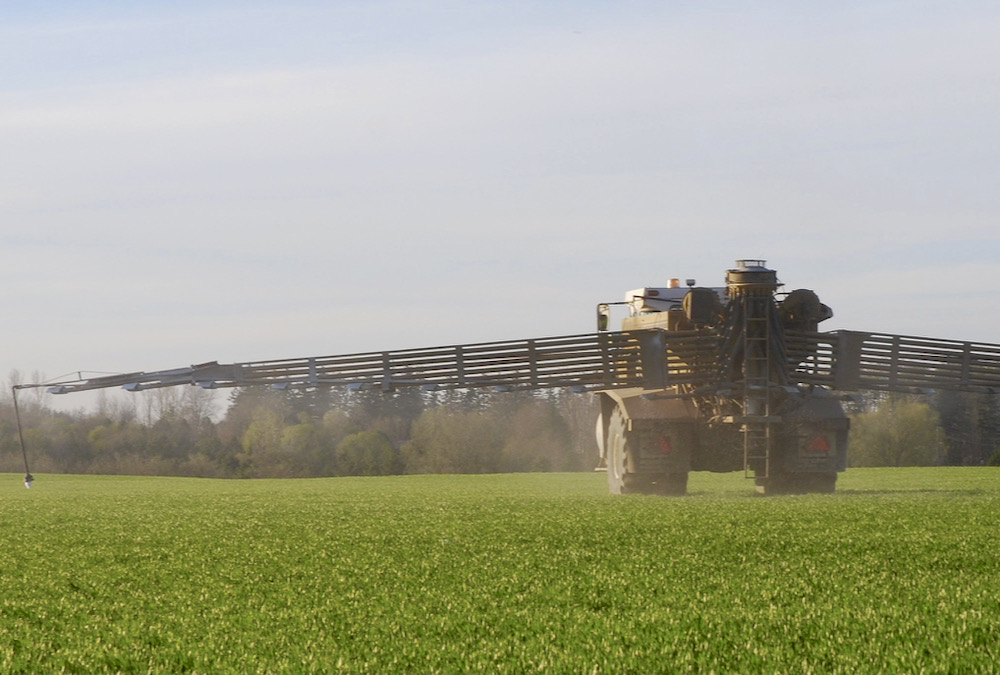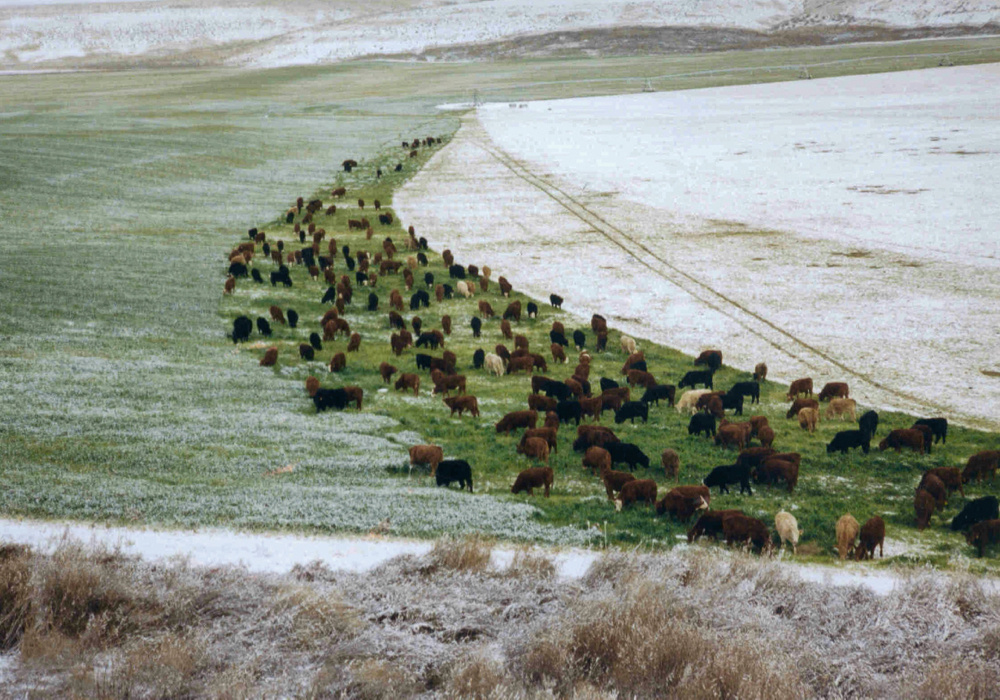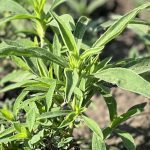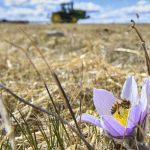In the chase for improvements in soil health, there have been many contributions from individuals and organizations that have enticed others to adopt new practices and work toward positive change on their farms. Of course, there have been challenges too, including those coming from the sheer diversity of farms and producers and the individual’s comfort or reluctance to change.
Also at play is the history of the farm, and indeed, the history of the entire region where it’s located.
One such project currently underway is in Eastern Ontario under the guidance of Ontario Ministry of Agriculture, Food and Rural Affairs (OMAFRA) staff and the Renfrew Soil and Crop Improvement Association (RSCIA). There was also a companion project in Stormont in 2017, in the eastern corner of the province. It’s a concerted effort to learn more about soil health quality and to share that information with as many growers as possible, especially as interest in the science continues to gain momentum.
Read Also

Agronomists share tips for evaluating new crop products and tech: Pt. 3
With new products, new production practices and new technology converging on the agriculture industry at a frenetic pace in recent…
The study began in 2016 at the urging of Scott Banks, OMAFRA’s cropping systems specialist based in Kemptville. He asked Adam Hayes, OMAFRA’s field crops soil management specialist, about the potential for a qualitative assessment of agricultural soils in Renfrew County. The goal would be to establish benchmarks and use them to measure future soil health trends.
Participating growers received part of a $1,500 project grant but had to pay $100 per sample from their farms that year, and the project was continued in 2017 with nine participants. If they wanted multiple samples or ones taken from other farms, they incurred those added costs — and most did: the 2017 results numbered 20 on those nine farms.
Soil health indicators measured in the study included physical properties such as texture, resistance, depth of the A-horizon, aggregate stability and water infiltration. On the chemical side, readings for pH, cation exchange capacity, potassium, phosphorus, calcium and magnesium were taken. And under the biological measurements, there were organic matter, potentially mineralizable nitrogen (PMN), total nematodes, and parasitic nematodes. Tabulated results were colour-coded, with red indicating a potentially limiting factor that deserved a high priority.
New ground
As a template, Renfrew County agriculture presents a unique opportunity, primarily because of its diversity in both cropping and livestock management, but also due to its long history of agricultural production, dating back more than 200 years on some farms.
Among the participants’ fields, growers planted corn, soybeans, cereals, canola, forage and pasture as well as vegetable crops. The region also has growers with sunflowers, peas and industrial hemp.

Adam Hayes was the facilitator for the program working with Sebastian Belliard, who’s also a soil management specialist for OMAFRA in eastern Ontario, along with the participants in the study. Hayes agrees the project is an opportunity for Renfrew and Stormont County growers to learn about their own soils from this benchmark program, but it’s also a guide for those in other counties or regions to do the same.
“It’d be really nice if other areas picked up on that and wanted to do testing, so they have an idea of what’s going on as well as what changes over time,” says Hayes. He adds that the long-term goal with this project is to continue it annually, then come back five years after the first tests to determine what’s changed or has been accomplished in that time.
Instead of just looking at the different components and trying to determine which indicator might be more valuable than others, Hayes notes he would rather look at the overall impact of the research. That’s why he and OMAFRA staff members used the information to provide suggestions from a management perspective with the goal of improving their soil health. He says, the tests can be used as a benchmark to determine the success of the changes.
As for the costs associated with various add-on tests, Hayes acknowledges that some components went beyond the standard soil test, including measuring compaction (with a penetrometer) and nematode tests.
“The nematode analysis is relatively more expensive than a fertility and organic matter test,” concedes Hayes. “But it’s a biological indicator that we’ve been looking at to see how valuable it will be. Certainly soil biology has been studied for a long time and it seems to be moving faster (in development). Whether we’re coming up with a lot of takeaway knowledge, I’m not sure, but with a lot of the DNA testing that’s becoming more cost-efficient, it’s opening more doors.”
Grower commitment
Not long ago, agronomists and precision ag proponents would comment about the value of data, asking, “When is the best time to start gathering information like yield data?” The answer was, “20 years ago.”
Another question was posed: “When’s the second-best time to start that process?” The answer is, “Today.”
It underscores the need to establish a starting point without losing sight of the goal because of a fear of having waited too long to start gathering data. The same reasoning applies to soil health parameters, and Sebastian Belliard believes the work done by growers in 2017 and 2018 is a solid indicator of where they want to go with evaluating their soil health.
As Belliard notes, the Renfrew soil health group used a Tier 1 grant from the Ontario Soil & Crop Improvement Association to pay for one free sample per participant. But seeing them invest their own money to maintain and gather information shows a greater commitment.
“With these soil health assessments — the analytical lab-based ones — the results depend a lot on the soil that we’re looking at, and while that may sound obvious, most indicators are dependent on soil type,” says Belliard. “Those inherent soil characteristics — like texture — that aren’t affected by management do affect the ranges of these indicators. Organic matter levels, aggregate stability and clay content are all important factors. But it’s important to be able to compare results from a soil to a similar soil so that it’s ‘apples to apples’.”
Doing that has to start with a database of samples from a range of soils and production systems so they can be compared equally. Belliard points to the Cornell Assessment of Soil Health (CASH) as a model for information and data-gathering. It contains more than 40,000 data points from the northeastern U.S. and has taken a concerted effort and dedicated team of individuals working with growers. The Renfrew and Stormont projects are an important step in trying to build a similar extensive database for Ontario.
Best of all, the Eastern Ontario projects can serve as models for other parts of the province — with some provisos in place. Belliard believes it’s important to do this kind of testing in Renfrew because it’s one of the few places in Ontario that has acidic soils. Most soils in other parts of the province tend to be alkaline to slightly alkaline but in Renfrew, he says there were more pH levels under six than there were above.
“That goes back to the point that there needs to be a larger database of soil test results for a particular region,” says Belliard. “It wouldn’t be productive to compare Renfrew results with those from Middlesex or Oxford, just in terms of soil pH.”
That underscores the need for more research and more data.
At the grower level
The testing in Eastern Ontario also presents some interesting patterns and reflections in soil health trends. Farming in Renfrew and Stormont has a greater diversity with many growers either incorporating livestock with longer or less-conventional rotations. That diversity can be as much a necessity as it is a benefit, given the region’s varied soil types and microclimates.
Jennifer Doelman has had first-hand experience with the nuances and variability within the county. She farms with her husband and her parents near the hamlet of Douglas (between Eganville and the town of Renfrew), with the majority of their 2,600 acres consisting of heavy white clay. They have a varied rotation with corn, soybeans and usually hard red wheat, often hitting their protein goals. They are also seed producers, with forage peas, triticale, barley and oats, and they’re one of the larger canola growers in Eastern Ontario. Doelman has also tried sunflowers (for a line of bird feed they produce) and recently attempted flax. Cover cropping is yet another addition to their rotation but their frost-free period is relatively short and it can be a struggle to adapt to some practices from other regions of southern Ontario.
The white clay in her soil made Doelman eager to participate in the OMAFRA and RSCIA project. Some of it was an attempt to gauge the impact of their soil management practices but it was also as a means of learning about soil health indicators and the possible directions the research may take them.
“The biggest thing for me is drought management,” says Doelman, who learned much of her no-till discipline from her father, a former director with the RSCIA and owner of one of the first no-till drills in the area. “We call ourselves the Bromley Desert. We’re in a bit of a rain shadow and with the tight clay, it can be very unforgiving.”
The region was hit hard by a Level 3 drought in 2012, which became a driver in convincing her to join this soil health project. But it also deals with “soil health,” a concept she first encountered in university and is now seeing as a desired practice. The difference for Doelman is that she firmly believes that in order to be sustainable, there must be a foundation that fixes an eye on profitability.
“We need to be finding ways to make it so that it pays, and we can show people why it’s worth investing in,” she adds. “If your soil doesn’t work, you can’t make any money.”
It’s a unique perspective that Doelman brings to the soil health sphere, one that’s not built on convention or tradition: she and her husband grow corn yet she concedes it’s almost a four-letter word with the white clay where they farm. When the growing season co-operates, corn stored through the winter can help with cash flow, compared to soybeans which are shipped at harvest.
“I’ve lost more money due to corn than any other crop, but when it does work, it works very well and is profitable,” says Doelman. “Again, with the Bromley Desert, tight clay and the early frost, you can look at the crop history and the failures are almost as strong as the wins.”
“When they stopped feeding the dairy cow and started feeding the rumen, that’s when things began to happen,” notes Doelman, referring to shifts in dairy management.
“When farmers stop thinking only about feeding the plants and turn their attention to feeding the soil, that’s when they’ll make a difference,” she believes.
“I’m really hoping that now that the science is catching up, now that we’re valuing organic matter and we’re more attuned to it, it will become a trend.”




